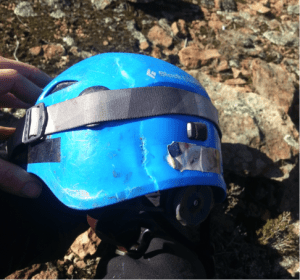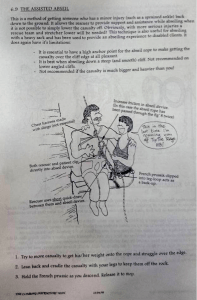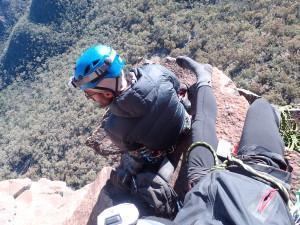Last Sunday, myself and three other club members began climbing up two separate routes in pairs on the 250-300m face of Bluff Mtn at the Warrumbungles. The other pair had gotten off route and into bad rock and hard climbing when a bad fall at approximately 5pm left one climber with a head injury. Not being able to climb or bail safely from 150m up due to the head injury and bad rock/difficult terrain above and below they set off their PLB and also called emergency to give as much information as possible. An extremely long and difficult rescue ended with them being flown to Tamworth hospital to be stitched up and treated for mild hypothermia. Thanks to the rescuers, and the climbers preparedness and good decisions they are both ok.
Here’s many things the climbers did right as well as a few tips from the whole experience:
- Always wear a helmet! (Which everyone was)

Note: More expensive full foam helmets (such as the BD vector or Petzl Meteor) are worth the money. They provide better impact protection and have foam all around your head, not just on top. However they are less durable and if not looked after, small impacts will leave dents and eventually ruin them (unlike the cheaper solid-shell entry level helmets). So look after your helmet!
- Multipitch preparedness: When multipitching always have a PLB with a trip registered on it according to the description in the PLB post below. Have enough food, water, working space blankets, printed route descriptions, topos, maps of areas, head torches, lighter and first aid for a potential benighting.
Also, do as much research as possible, especially for difficult or hard to follow routes. The crag doesn't have it all, but topo's may be found elsewhere such as sydney rockies. - Head injuries: A head injury can be very dangerous, always play it as safe as possible. Since the patient may be compromised, do not take the risk of them climbing or abseiling themselves. Treat following St John’s advice: http://www.sja.org.uk/sja/first-aid-advice/head/head-injuries.aspx
- Back it up: When trad climbing, always consider "where would I fall if that piece blew?". If it would mean a dangerous fall, back pieces up and double them up, especially in marginal (weak) rock.
- Self Rescue: If possible, to partly or completely self rescue (which you should know how to do) is quicker, safer and less costly than calling rescue. Or it can make the job of external rescue parties many times easier. Read Self Rescue by David Fasulo for all of the techniques. One important one is to know how to tandem abseil with a patient. See an image of one method below (click for larger image)

Unfortunately abseiling was not possible in this situation due to the poor rock for anchors below along with the potential difficulty and danger due to the head injury and having only one 60m rope. - Calculating Time: Understand how long you will take to complete walk ins, abseils, pitches (up to 2hrs each even) and walk outs. Be conservative count them up and plan appropriately. It is better to not accept that you may climb or finish in the dark. It greatly increases risk. Instead, get up earlier, don’t do that climb, or if it’s getting late and is possible, bail!
- 2 ropes/bailing: Better to have two not one 60m rope. It makes bailing a lot easier and can be used to climb on doubles or use one to haul the backpack. Remember that bailing is always an option (scope out an/the exit track if required). It is often a smart, brave and safer choice to quit while you’re ahead.
- Specific Rescue Information: In PLB trip details and emergency calls, be specific that you are ‘rock climbing’ and you are Xm up a Ym ‘cliff face’. Turns out ‘climbing’ and Xm up the mountain can be taken as ‘hiking’ and Xm up a trail.
- Coordinate systems: PLBs are usually very accurate however, as the climbers did, it is still best to have coordinates in the description as well as telling emergency over the phone if calling. This particularly applies to canyoning.
Note: Emergency services may not know what Easting and Northing is. This is what the canyon guide gives coordinates in. Therefore convert your coordinates for your maps/descriptions or link/tell them about Redfearn’s formula
(See Leading Canyoning for more mapping and coordinates info about MGA 55 and 56, sixmaps, canyon guidebook grid references etc.)

For full trip report see here: Warrumbungled!
Cheers, Brendan



